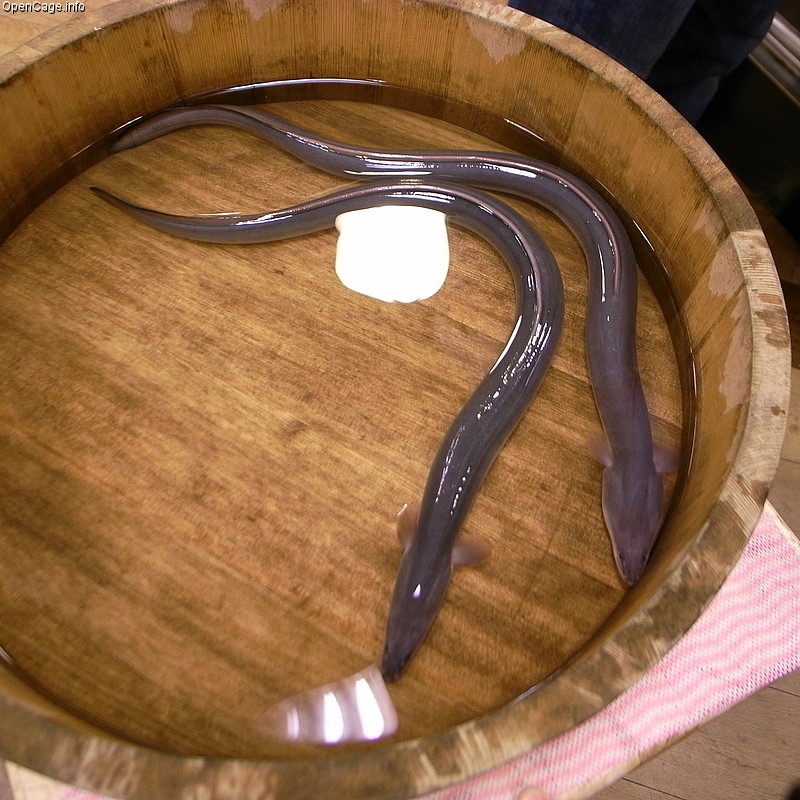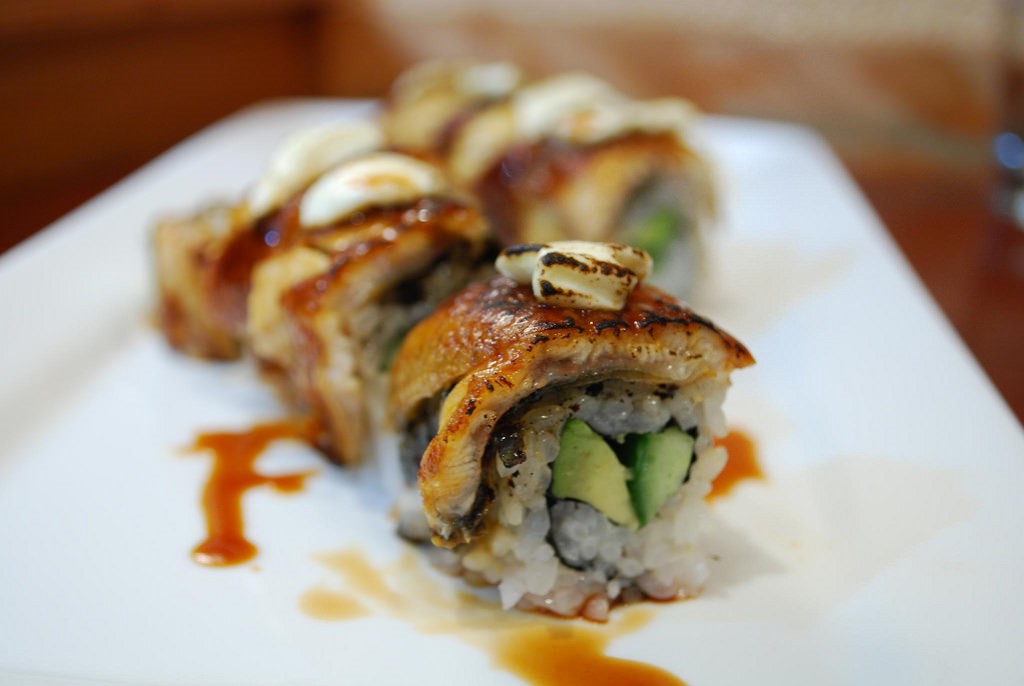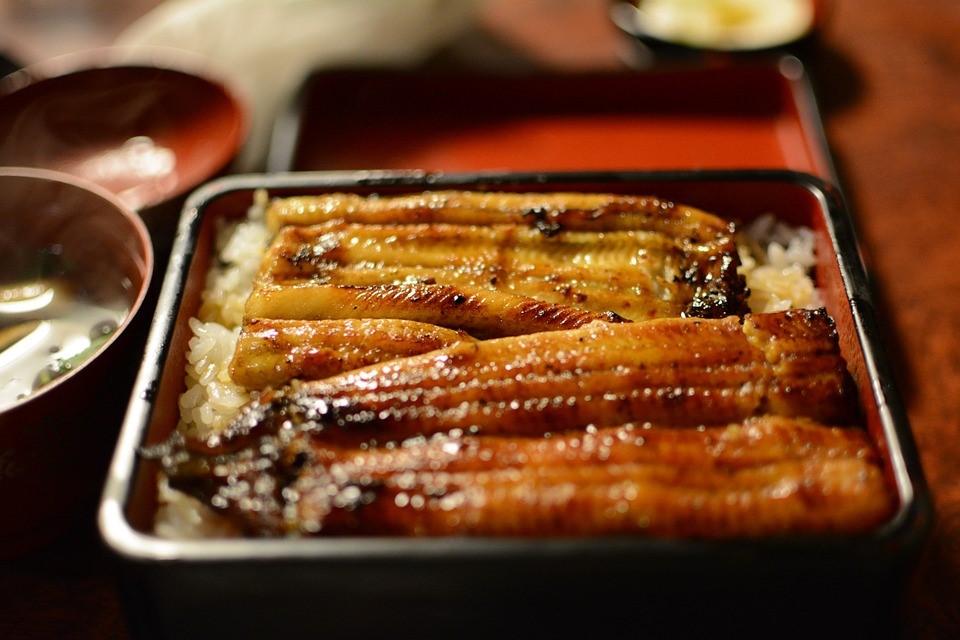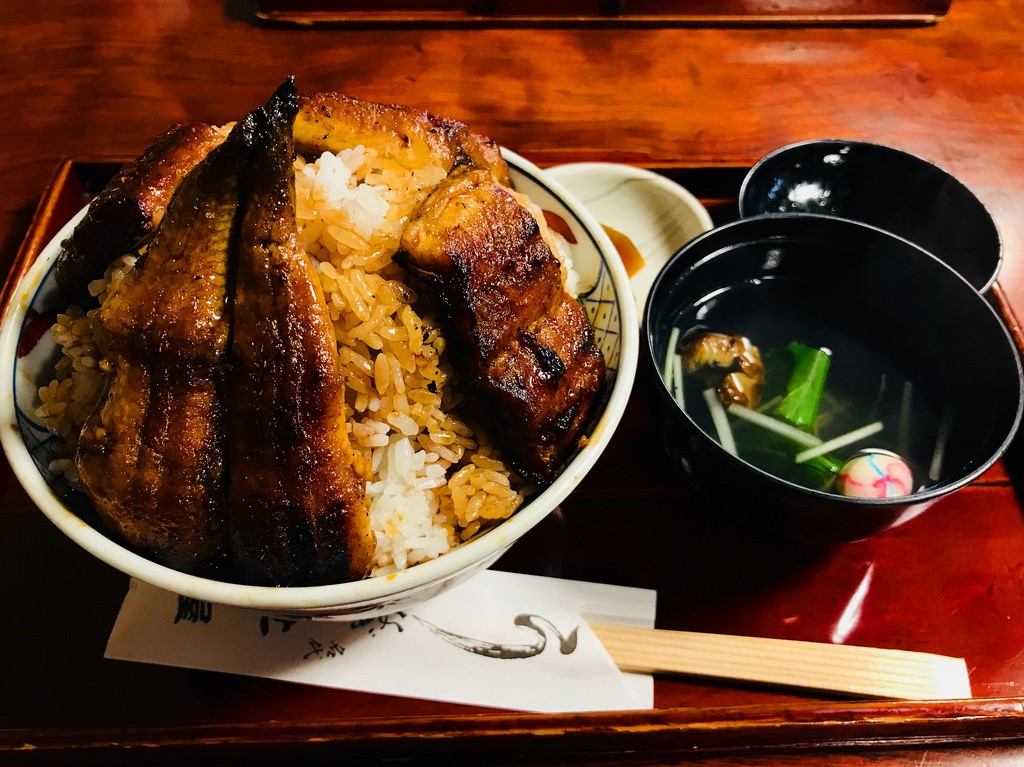うなぎ ₋eel-
JAPANESE FOODS
16.01.2020
うなぎ
UNAGI-eel-
The first time I heard about “Unagi” I was reading Man’yoshu, the oldest, and perhaps most known, collection of ancient Japanese poetry. It goes without saying that Unagi is one of the most central ingredients when it comes to Japanese traditional cuisine.

The term unagi (鰻, うなぎ) refers to the Japanese eel, a specie of fish that lives in fresh water and estuaries in many countries of East-Asia. Although unagi is an ingredient that can be potentially used in many dishes, raw eels are venomous and are generally grilled.
Grilled unagi can be used in sushi, such as in the case of unakyu (sushi roll with unagi and cucumber), but the most known dish using this ingredient is unadon (うな丼).


Unadon is a type of donburi, a rice bowl dish. In other words, unagi is traditionally consumed on the top of a rice bowl, after being covered with tare (a sweetened soy-based sauce) and grilled. This traditional way of grilling, similar to the well-known teriyaki is named kabayaki. Pulverized dried berries of sanshō are then traditionally added on the top as a seasoning.
Nowadays unagi can be eaten in various restaurants around Japan, although unagi-ya (shops specialized in cooking unagi) are probably the best option if you want to try high-quality Japanese eel. Unagi is considered a precious food and its cost can be relatively high, generally starting from 3000 yen. The reasons behind the price are in grand part due to its rarity and the fact that the Japanese eel population has greatly decreased in recent years.
Unagi is also a food very high in proteins, vitamins, and fats. In Japan, summers can be very hot and humid and during this period unagi are traditionally eaten because of their nutrients. Unagi appears several times in Man’yoshu, the most ancient collection of Japanese poetry, mostly because of its health properties. An example is this poem by Otomo no Yakamochi:
石麻呂に
我れ物申す
夏痩せによしといふものぞ
鰻捕り食せ
To Iwamaro
I say this:
If you’ve slimmed down in summer
There’s one thing that works:
Catch and eat eels!
(MAN’YŌSHŪ – MYS XVI: 3853)
Although unadon and the other most known ways of cooking unagi are from the Edo period (1615-1868), it is clear that fresh water eels have been widely consumed and appreciated in Japan for a long time.





